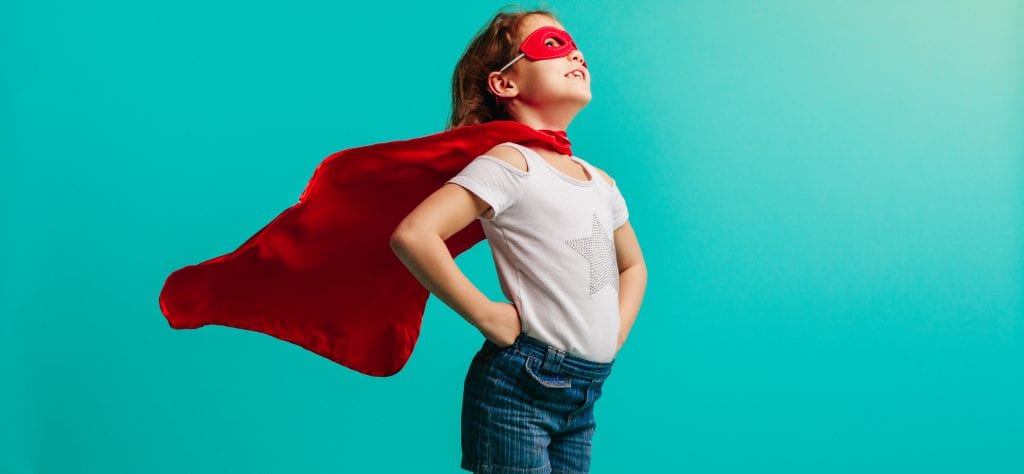The Importance of Superheroes in Play

Superheroes have always been around but lately it seems they have increased in the movies and television, so it would be only natural that our children are interested. Entering fantasy play can allow kids to unburden themselves and have insight into their own realities. It can also allow children to explore their limits or unhealthy behaviors through the metaphors and then explore ways to correct them. Superheroes can model healthy behaviors but also teach conflict resolution between characters in a fun way. As we may think, our kids are not wasting time playing with the action figures or dolls, they truly are getting something from the interactions.
Frozen is a current movie right now that children look up to with female heroes. As much as the song “Let it Go” gets stuck in our heads, it has underlining lessons of self-esteem, confidence, and finding your own voice. Children can relate by talking about worries they want to “let go” or not “conceal” anymore. They see a role model in Elsa who overcomes being different and finds strength. Children can realize flaws are not really flaws at all but features that make themselves unique.
The Hulk in Avengers is another great example of emotions on full display. The Hulk spends a lot of time trying to control his anger as Bruce Banner that when it comes out as the Hulk, it is extreme. As the Hulk progresses, he learns to control his emotions and his “Hulk” side to do good. Kids experiencing anger look to Hulk to describe their own internal fight and the benefits of not suppressing the anger but controlling it.
Children tend to lean towards the star superheroes such as Captain America and Iron Man because their characteristics stand out as qualities they also want to have. They are true heroes that teach teamwork, strength, selflessness, and empathy towards others. Children can use these superheroes in role plays to see the best versions of themselves and how they can have the confidence to lead. Kids also see Captain America and Iron Man have disagreements but still support each other. This dynamic is common in friendships and families and it normalizes conflicts and how to resolve them.
The “good guys” aren’t the only superheroes that children like to play with or talk about. Villains such as Thanos or Darth Vader are used by kids to show how bullies treat them or how they view anger. Children can confront the villain as their own superhero to play out the best way to handle a disagreement and gain confidence that they can do it too. By naming the villain, anger, or bully, it becomes less scary. The idea is the same as in the book Harry Potter when they name the villain “He Who Must Not Be Named”, yet Harry wants to take away the fear and power that gives the villain and begins to call him Voldemort. This is a change in the story where Harry becomes to gain control of his own emotions and power.
These are just a few examples of how Superheroes are important to have and play with in the playroom and at home. Kids can learn about family dynamics as all superheroes balance their own families with their external roles of helping others. Children can also learn that flaws are acceptable because all Superheroes have one despite the power they have, such as Hulk and his anger, Captain America and Iron Man and their control for what is right, and Elsa with her withdrawing from those who love her. They also learn how to work through the flaws and gain self-esteem. Children are finding their own superhero within themselves as play with these role models, and that goes beyond play.



